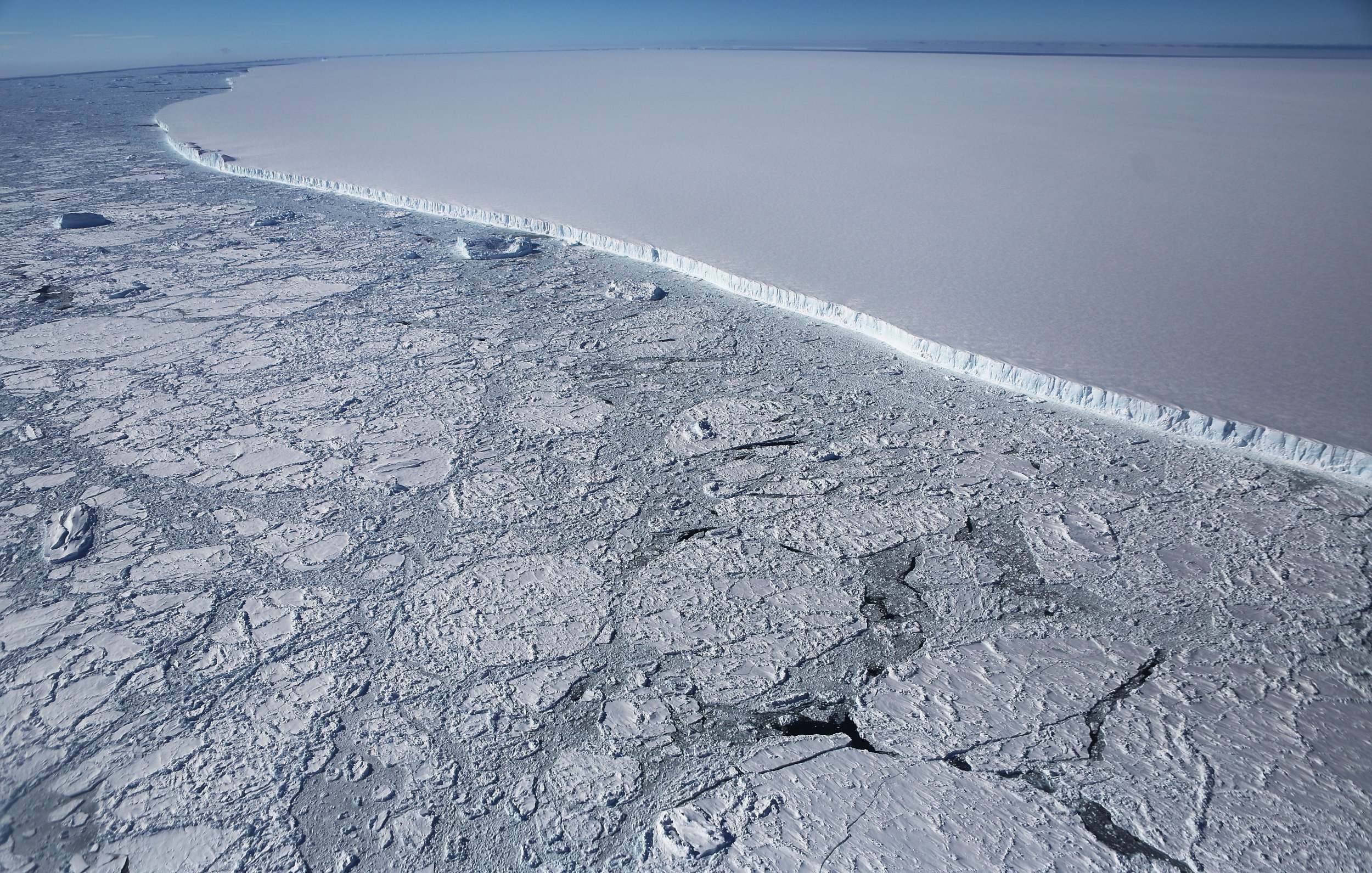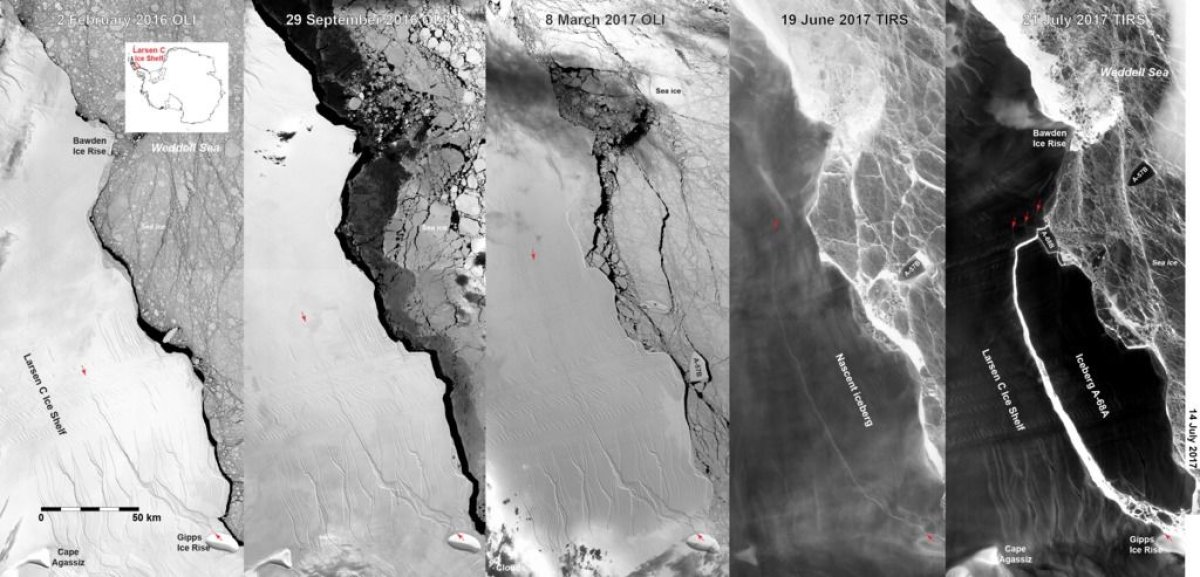
Scientists from the British Antarctic Survey are taking off this Wednesday to explore a once-inaccessible marine ecosystem beneath the Larsen C ice shelf—where an iceberg the size of Delaware broke off last summer. The 2,240 square-mile iceberg that broke off paved the way for scientists to explore an ecosystem that's been hidden beneath the ice shelf for up to 120,000 years, according to researchers.
"The calving of A-68 provides us with a unique opportunity [to] study marine life as it responds to a dramatic environmental change," Katrin Linse, marine biologist for the survey who's leading the three-week mission, said in a statement. "It's important we get there quickly before the undersea environment changes as sunlight enters the water and new species begin to colonize."
Studying the oceans beneath ice shelves is risky and expensive; another recent expedition launched underwater drones to navigate the cavernous, icy depths. The calving of this iceberg "offers a new and unprecedented opportunity to establish an interdisciplinary scientific research program in this climate sensitive region," science director at the survey, David Vaughan, said in a statement. The scientists will board the RRS James Clark Ross from the Falkland Islands off the coast of Argentina by February 21. Then they'll spend three weeks gathering data from the ship.
Now that the A-68 iceberg calved, once-hidden marine life of seafloor animals, microbes and plankton in the ocean can be sampled and thoroughly investigated. Scientists will also collect sediments and water samples from the area that was once the underbelly of the Larsen C ice shelf. Video cameras and a sledge pulled along the seafloor will collect tiny marine creatures. Ecosystem changes, such as new marine mammals or birds that may move in, will be recorded as well.

The iceberg likely calved from the Larsen C shelf between July 10 and 12. The ice shelf, which is essentially like a massive ice cube buttressing glaciers from sliding into the sea, is the fourth largest in the world, according to NASA. Though the calving of this particular iceberg does not contribute to sea level rise, it illuminates fears about the overall stability of the ice shelves, which keep Antarctic glaciers from flowing into the sea. Without the A-68 iceberg, the area of the Larsen C shelf dropped by 10 percent.
"We need to be bold on this one," Vaughan said in a statement. "Larsen C is a long way south and there's lots of sea ice in the area, but this is important science so we will try our best to get the team where they need to be."
Uncommon Knowledge
Newsweek is committed to challenging conventional wisdom and finding connections in the search for common ground.
Newsweek is committed to challenging conventional wisdom and finding connections in the search for common ground.
About the writer
Sydney Pereira is a science writer, focusing on the environment and climate. You can reach her at s.pereira@newsweekgroup.com.
To read how Newsweek uses AI as a newsroom tool, Click here.








